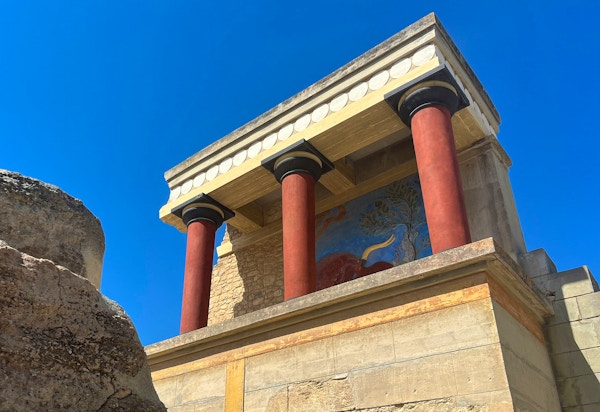Mount Olympus
If there is one place most associated with Greek mythology, it’s Mount Olympus. That’s because it was considered the home of the gods while also being a real mountain near Greece’s Thermaic Gulf. Ancient Greeks believed that Zeus sat on a throne at the top of the mountain, where he was joined by a pantheon of Greece’s most powerful gods.
Even among casual audiences, Zeus is a name you’ve probably heard before. That’s because Zeus and his pantheon, with deities like Athena and Poseidon, are heavily represented in media today. The unique personalities and powers of the Greek gods made them interesting characters in novels, movies and even themed slot games found online. That’s why users who play Age of the Gods slot machine online can find the Olympian gods on its reels, along with other Greek paraphernalia. Other popular gods like Hades also make an appearance in the game, someone who was thought to dwell underground instead of the peaks of Mount Olympus.
Naturally, Mount Olympus welcomes many tourists every year. Many start their journey at the idyllic town of Litochoro, the closest town to the mountain itself. For the full experience, outdoorsy travellers also hike the Enipeas Gorge or scale Olympus’ highest peak, Mytikas. Mount Olympus can be a relaxed trip or a challenging hike, depending on what you’re looking for.
Knossos, Crete
Away from the Greek mainland, the island of Crete is already a well-known holiday destination. However, while there are beautiful resorts, there are also ancient ruins left behind by the proud and (for their time) advanced Minoan civilisation. That’s where Knossos comes in, a colourful, palatial ruin that may have been the home of King Minos in Greek myth.

According to the legend, this is where King Minos presided over the labyrinth, a winding maze built to trap his bull-headed son – the Minotaur. Theseus would later arrive and slay the Minotaur, with some help from Minos’ daughter Ariadne.
While Theseus fled from Knossos, tourists flock to the palace there today. It’s one of Crete’s most prestigious tourist attractions, with dedicated tours available for visitors. It also sits just outside Heraklion, Crete’s capital city, so it’s easily accessible for those who have just touched down on the island. The labyrinth, if it ever existed, is no longer standing. Nevertheless, visitors can learn about one of history’s more advanced and mysterious cultures.
Nemea & The Nemean Countryside
Hercules is one of mythology’s most famous strongmen, a reputation he got by completing the twelve labours. It’s the first one that had the most staying power, where Hercules cast his weapons aside and wrestled a lion that was stalking the local countryside. That countryside was around Nemea, a small village in Korinthia that’s still standing today.
While we don’t know if Hercules ever forced a lion into a headlock, we do know that the village is home to ancient ruins from the period. Today, the local Nemean countryside has a better reputation as Greece’s number one region for growing red wine. This means there are | many wineries and vineyards here, growing unique Agiorgitiko grapes https://www.jancisrobinson.com/articles/nemea-wine-lovers | and offering tours and free samples to the world’s foodie travellers.
With these destinations, tourists can get closer to Greece’s mythology while travelling at their own pace. Hikers and backpackers should love Mount Olympus, while more inquisitive travellers can enjoy the ruins at Knossos and Nemea, along with the unique food and drink on offer in the local area.

